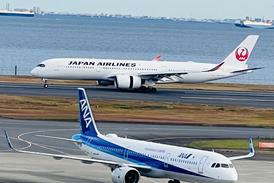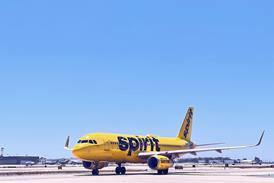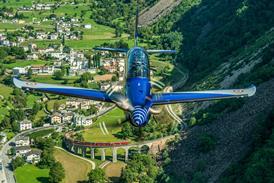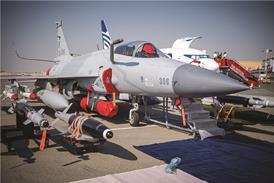Sukhoi and the Komsomolsk Na Amur Aircraft Production Organisation (KnAAPO) are displaying the Su-27SKM at Le Bourget.
The Su-27SKM designation is applied to an upgraded export version of the basic single seat Su-27S fighter, which adds the avionics and advanced glass cockpit developed for the two-seat Su-30MKK supplied to the Chinese air force.

The conversion is principally aimed at China's original Su-27SK. The new cockpit is dominated by three colour MFDs (two large and one narrow in the centre), a new HUD, and is equipped with a GPS based navigation systems and a new communications suite.
An upgraded fire control system adds a phased array antenna to the improved N001VEP1 radar (an earlier upgrade configuration, the SMK, used the N001M) and permits full use of the RVV-AE (R-77 AA-12 'Amraamski') medium range air-to-air missile.
The pilot's original helmet-mounted sighting system is replaced by a new Sura K unit. The aircraft also has an upgraded IRST with a collimated designator, and a new L150 radar homing and warning system can be used to cue anti-radar missiles.
Air-to-ground capabilities are thus considerably expanded, adding compatibility with a wider selection of precision-guided air-to-surface bombs and missiles, including the Kh-29T/TE, Kh-29L, Kh-31A and Kh-31P missiles and KAB 500Kr and -1500Kr bombs.
The Russian air forces are upgrading some of their Su-27s to a similar standard using the designation Su-27BM, and later Su-27SM (two-seaters will be upgraded to similar Su-27UBM standards), though a lack of funding has led to the programme becoming more export-led in recent years.
Capability
The original Su-27SMK (effectively a basic Su-27S but with a retractable air refuelling probe) was built in 1995, but lacked multirole capability and R-77 support.
The first Su-27SM conversion was performed on a Russian air forces Su-27 loaned to Sukhoi from the fighter regiment at Dzemgi. This made its first post-conversion on flight 27 December 2002.
The original Su-27SMK demonstrator aircraft then joined the flight test programme, retrofitted with the N001VEP radar, and with provision for 2,000 litre (440gal) underwing drop tanks. It was originally referred to as the Su-30KI (though it was a single-seater) before being redesignated as the Su-27SKM. This is the aircraft being displayed at Paris.
The first five Su-27SMs were handed over to the Russian air forces' combat and conversion training centre at Lipetsk, and the 23rd fighter regiment at Dzemgi began conversion in 2003, receiving the first seven of 24 aircraft on 23 December 2004. Ten will follow during 2005, and the remaining seven during 2006. The Russian air forces plan to upgrade the entire fleet to Su-27SM standard by 2008, but this seems unlikely to be funded.
A second phase upgrade is offered for the Su-27SM and SKM, offering improved versions of the AL-31 engine, perhaps including thrust vectoring.
Source: Flight Daily News























